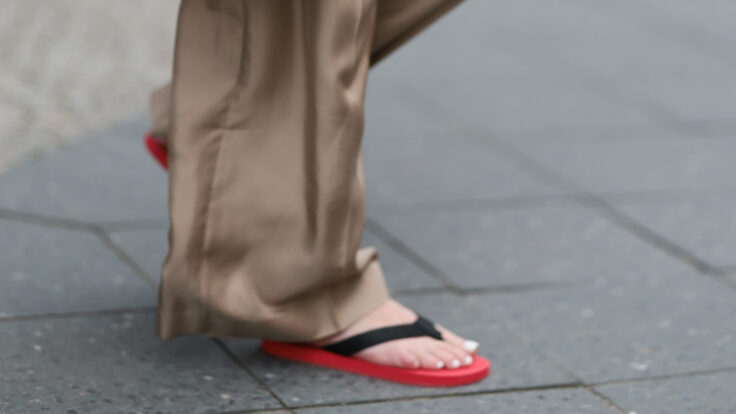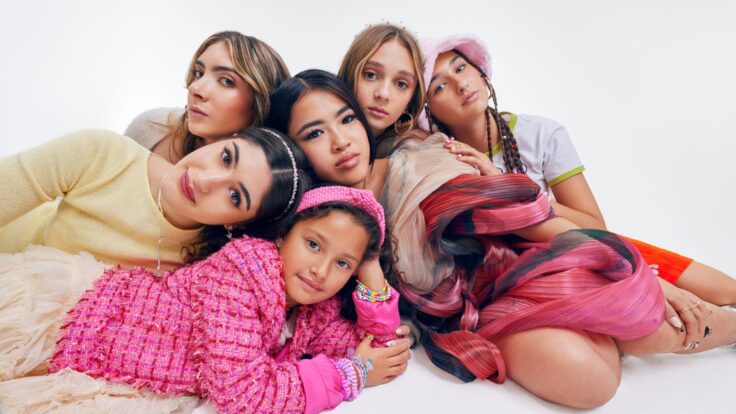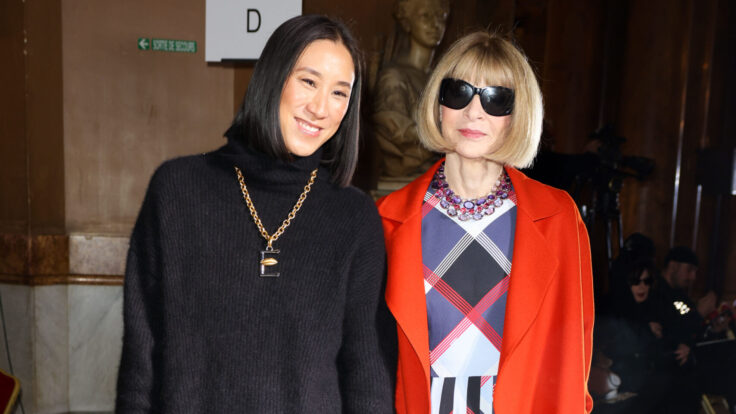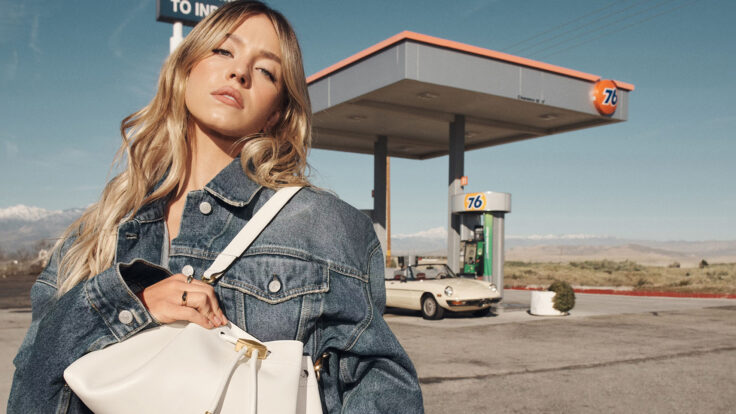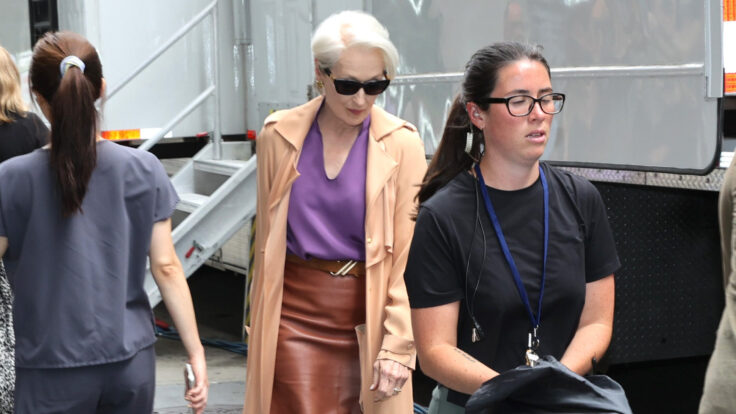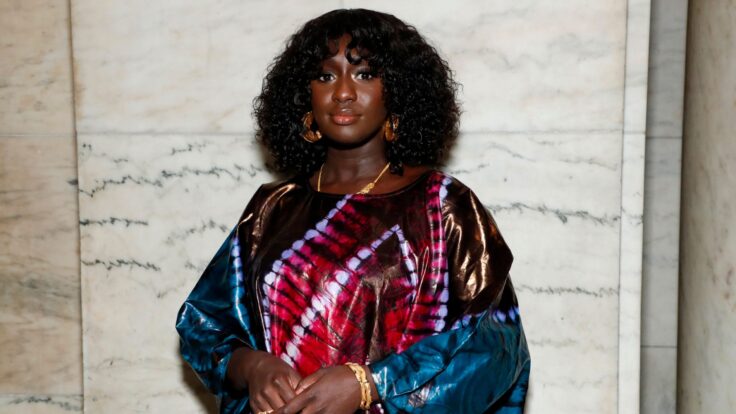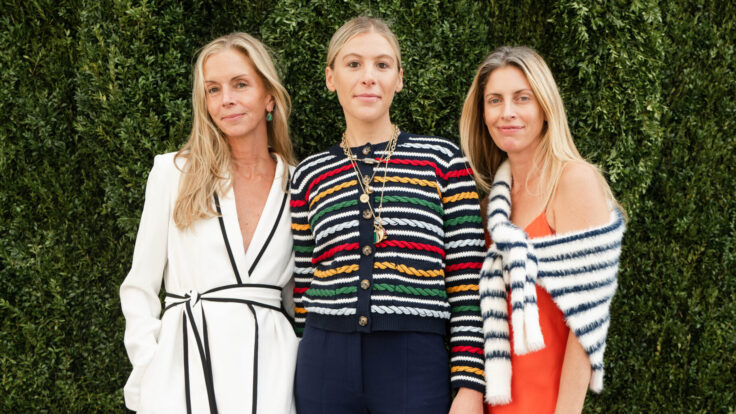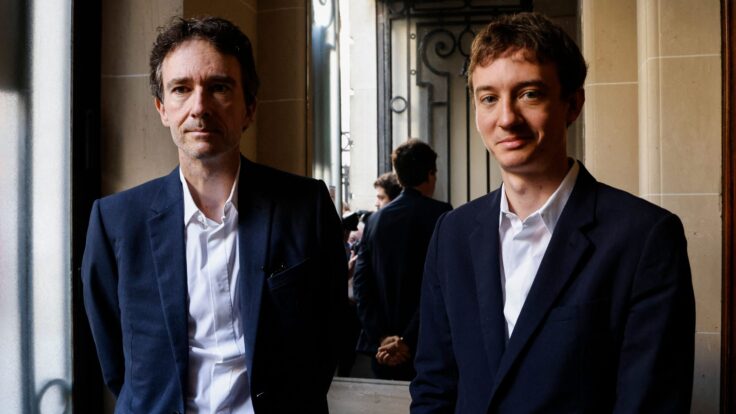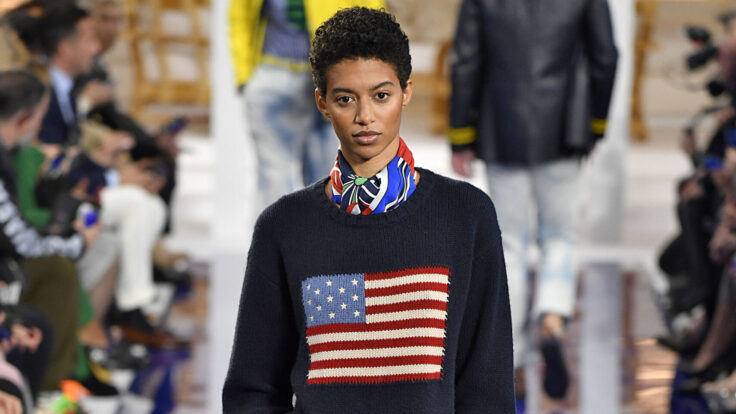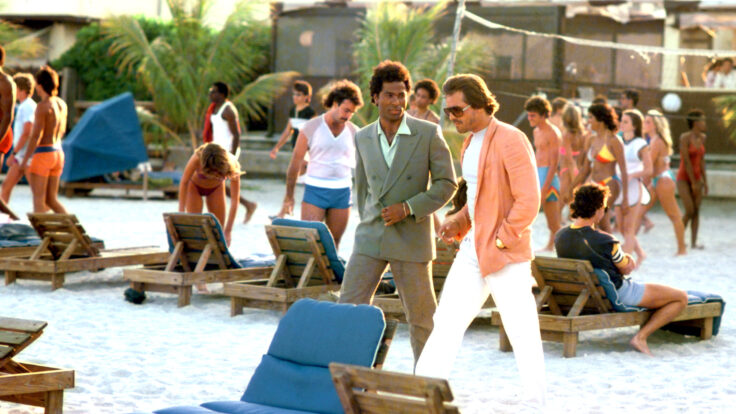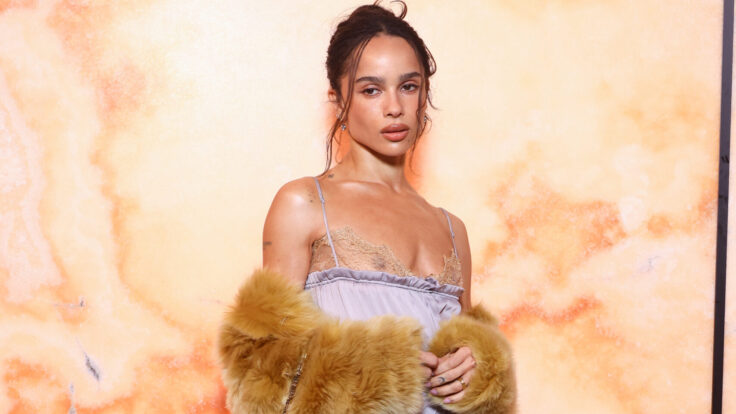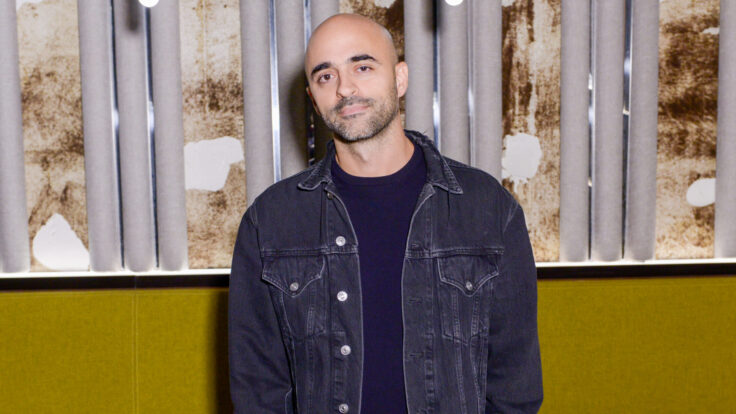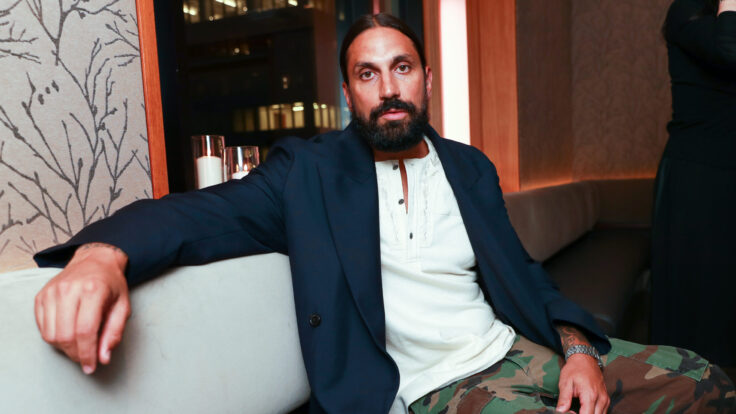Hi, and welcome back to Line Sheet. Happy New Year! I’m not big on resolutions, but I did hire someone to throw a bunch of stuff out of my house. I hate crowded countertops.
Today, we too are clearing a path for what’s to come. Up top, Sarah “SShapiro@puck.news” Shapiro explains why all the brands that sell thin t-shirts (from Flore Flore to O.G. Michael Stars) are hitting hard at the moment, plus quick insights on Taylor Swift’s decision to wear little girl workout clothes and whether Walmart’s Hermès Birkin dupe is up for legal review. For the main event, I’m sharing my big thoughts on what to expect in our industry in 2025. As a companion piece, Sarah is joining me tomorrow on Fashion People to contemplate the year ahead. Listen here and here.
Before we get started, some light housekeeping. As I previously mentioned, starting Monday, January 6, I’ll be writing to you five days a week, with contributions from Sarah and Rachel “RStrugatz@pick.news” Strugatz, our beauty correspondent, throughout.
The big news: On Thursdays, our reporting will be accessible only to Inner Circle subscribers, which means you’ll need to upgrade your Puck membership if you don’t want to miss out. (You can do so right here, or email Fritz@puck.news for help if you’re one of those types.) The Inner Circle is still far more affordable than most annual media subscriptions. In addition to Thursday’s emails, you’ll have the opportunity to join private calls with Puck’s entire roster of journalists, access other exclusive content, elite Puck merch, and much more.
But really, the main reason to upgrade is to keep up with my reporting and analysis on our industry. Line Sheet, as you know, is the last bastion of honest conversation about the fashion business and a privileged look at what’s around the corner. Last year, I was able to break the news of Matthieu Blazy’s Chanel appointment (a week before it was officially announced); Peter Hawkings’ exit from Tom Ford and Haider Ackermann’s arrival; and the Devil Wears Prada sequel, to name just a few scoops. I could go on with a list of I told yas, but that’s not what’s most important to me.
All I want in this life is to share information and intel you can’t get anywhere else: the mishegas behind the scenes at Condé Nast; Bernard Arnault’s succession plans; the strains on Kering’s gentle parenting style amid the Gucci turnaround; the consolidation of department stores, the merging of some online retailers, and the destruction of others. Last year, we tracked the rise and fall of Outdoor Voices, the return of Alessandro Michele, Taylor- Travis fashion in all its brand-burnishing (and damaging) iterations, the fate of your favorite indie mags, Zac Posen pushing a bulldozer up the Gap Inc. hill, and Phoebe Philo’s founder syndrome. I’ll be back with updates on these stories and so much more in 2025, and I hope you’ll join me.
Mentioned in this issue: Matthieu Blazy, Chanel, Kim Kardashian, Skims, Taylor Swift, Ryan Reynolds, Selena Gomez, Hermès, Fendi, Stéphane de La Faverie, Fabrizio Freda, Coach, tiered skorts, LVMH, Alexandre Arnault, Bernard Arnault, Sarah Burton, Givenchy, John Galliano, Margiela, Jonathan Anderson, Dior, Gucci, Kering, Trump, and many more…
|
|
|
|
A MESSAGE FROM OUR SPONSOR
|
A behind-the-scenes look at Angelina Jolie as she undergoes a beautiful transformation to play legendary opera singer Maria Callas.
—
For more information on MARIA and for upcoming screening opportunities, visit film.netflixawards.com
|
|
|
 |
Sarah Shapiro |
|
Three Things You Should Know…
|
- Nice-girl basics: The ascent and influence of Skims really is remarkable. During its five-and-half-year existence, the brand’s slinky, liquid-y, body-hugging loungewear aesthetic has crept its way into higher-end fashion, boosting the success of Leset, Flore Flore, and the return of Y2K favorite Michael Stars, among others. Last year, Leset beat its revenue projections for its once-a-year sale by 150 percent. (The square-shoulder Margot tee is the trendy thing, although the pointelle pieces—a micro-trend within this trend—are tracking.) And fashion people love Flore Flore—a favorite at indie boutiques like Outline, in Brooklyn, alongside Dries and Lemaire. But I’m particularly interested in Michael Stars, a nearly 40-year-old, L.A.-based t-shirt line that’s being adopted by the young people. (The label gets a namecheck in New York’s recent Maryam Nassirzadeh profile). The brand also launched a collaboration with Karla Welch, the white t-shirt expert and stylist. The Karla Tee retails for $48, which is basically free in 2025 terms.
- Blogilates, anyone?: We live in a world where people can be insanely online-famous for some unique skill and yet totally anonymous to virtually everyone else. Behold Cassey Ho, the founder of Blogilates, a YouTube fitness channel with more than 10 million followers. At the end of the year, Ho launched a fitness collection at Target that featured tiered cheerleading skirts, dance tanks, and hoodies in Smarties colors. Taylor Swift, whose tastes often veer toward middle school, wore a version of Ho’s lilac skirt and crop top in a viral video for “imgonnagetyouback” in which she references a “lilac short skirt.” (Swift’s came from Popflex, Ho’s higher-end line, and cost $60.) The Target skirt, actually a skort, is surprisingly still in stock, a testament either to the chain’s excellent inventory management or to the judgment of Swift’s fans, who may love her saccharine style but draw the line at wearing a tulle skirt while exercising.
- Have we reached peak dupe?: Walmart has gone from selling preowned Hermès bags via third parties, in spring 2024, to full on knockoffs (including a similar “gold stamped” logo) for $60-$80 via their marketplace. This past week, countless accounts on TikTok shared links to purchase the “Wal-mès” bags, triggering sellouts. Shitstarter Bethenny Frankel, the former Real Housewife and Skinny Girl entrepreneur,even commented on a video that the dupes were a win for the everywoman. Another ex-Bravo-ite, Tiffany Moon, teased her followers by suggesting her real Hermès was the Walmart version.
I asked Eriq Gardner, Puck’s legal expert and What I’m Hearing contributor, whether or not Hermès can sue Walmart. He said that a bag that looks like another expensive bag is probably not enough for a case, but Walmart could be getting into copyright infringement territory with the version that carries a similar-ish logo color and placement. After all, Amazon has executed this playbook innumerable times, undercutting brands—particularly basics and basics-adjacent companies, like Allbirds—with their own products.
|
|
|
|
A half-dozen-ish predictions regarding the luxury fashion business following its toughest year in recent memory.
|
|
|
The other day, I was listening to an interview with an economist, who said she doesn’t like to make year-ahead predictions until the end of January, when the dust from some fourth-quarter trends has settled—and especially in a presidential inauguration year. Well, I’m not an economist, and I’m genuinely shocked by how many of my 2024 predictions came true. So I’m not afraid to stick my neck out there. Actually, I prefer it that way.
In retrospect, for example, it was nearly inevitable that Estée Lauder Companies would get a new C.E.O., even as the group kept denying it. Rachel Strugatz, who joined Puck in February, documented the entire saga, breaking all the big story developments. She will be tracking the tenure of Stéphane de La Faverie—who officially succeeded Fabrizio Freda yesterday—closer than anyone this year.
Then there was my observation that off-price channels were overtaking the business. This hypothesis was validated when the F.T.C. blocked the Tapestry-Capri merger on account of the ostensible threat of decreased competition posed by the union of Coach and Michael Kors’s outlet stores. LVMH did set out to futureproof itself for the next phase of luxury consumption, as I predicted, although I never expected the year to be so tough for once-untouchable luxury brands like Dior and Louis Vuitton.
However, the state of normalcy I assumed everyone would be seeking after the pandemic roller coaster… was never achieved. Instead, the pace of designer musical chairs increased, and fashion’s leaders tried to manage the executive suite chaos. The LVMH succession sequence—from Michael Burke’s exit from the Fashion Group to the firing of H.R. head Chantal Gaemperle to the promotion of family turnaround favorite Alexandre Arnault—felt particularly jarring, but probably only because Bernard Arnault is not telegraphing his master plan.
|
|
|
|
A MESSAGE FROM OUR SPONSOR
|
A behind-the-scenes look at Angelina Jolie as she undergoes a beautiful transformation to play legendary opera singer Maria Callas.
—
For more information on MARIA and for upcoming screening opportunities, visit film.netflixawards.com
|
|
|
|
Last year, we learned that we’re far from any new normal. The status quo isn’t working: The majority of luxury goods being sold are ugly, too expensive, or unoriginal. So executives are forced to shake things up. Here’s what we’ll experience in 2025, in the aftermath of one of the industry’s toughest years ever.
|
1. Designers Will Design Again
|
|
There’s been much ado about the number of designer exits and appointments in 2024, but I wasn’t shocked. First off, rapid turnover isn’t new, we just have more access to incremental information than ever before. And when things aren’t working, change is necessary. Even Arnault, who tends to stick with designers long after their sell-by date—a mix of loyalty, stubbornness, paranoia, and a brand-first worldview—made some changes. If the rumblings at Dior and Fendi are any indication, there will be more to come at LVMH in the second half of 2025.
For now, though, expect executives to direct designers to focus on collections, not the advertising or merchandising that supports them. Matthieu Blazy’s “artistic director of fashion activities” title at Chanel, where he’ll debut his first collection in October, is a telltale sign that he will prioritize capital-F Fashion over other more commercial endeavors. Sarah Burton’s appointment at Givenchy and John Galliano’s success at Margiela (and expected return to the LVMH fold) are also early examples of this trend, a flat-out rejection of the idea that designers are marketers, too. (With the clarity of hindsight, of course, these are two entirely separate disciplines…)
The tricky part is that different brands require different types of creative leadership. Jonathan Anderson was successful at Loewe because he was so deeply involved in every aspect of building the brand. If he is headed to a machine like Dior, where he will inevitably have less control, will he be as effective? Or satisfied?
|
|
If the industry wants to convince design leaders to keep their heads in the studio, executives will need to assuage their nerves and amplify their vision with strong and reliable operators behind them. The problem, of course, is that there is a paucity of business talent at work today—particularly as traditional sales and marketing channels continue to evolve. In fact, the next generation of fashion, retail, and luxury C.E.O.s barely exists, which helps to explain why Arnault’s children have risen so quickly up the LVMH ranks. (Nepotism is only 80 percent of it.) Gucci, Kering’s largest and most challenged brand, is being run by a first-time C.E.O. who mostly worked in communications and marketing: a once unconventional, now increasingly common path. But fashion is marketing, which is another reason why this whole return to the traditional designer feels fleeting.
|
3. Hollywood Tries to Crack Fashion (Again)
|
|
This week, I conducted a brief, unscientific survey to see if rank-and-file industry people were feeling the effects of the Pinault family office’s acquisition of CAA, which closed in late 2023. For most, it’s been business as usual. “Campaigns are still happening, and those brands are still calling the same people,” one agency insider told me. “Zendaya is getting the campaign wherever she is… CAA or not.”
That’s not surprising: These are large businesses that need to work together, and a new owner won’t change that, especially given that both Hollywood and fashion are relationship businesses. The bigger issue is that the entertainment industry still hasn’t figured out how to make money in fashion, outside of actors working on campaigns. (Contrast that with beauty, where Rhode and Rare are blueprints for success.) One executive predicted we’re going to see an influx of celebrity food brands. But still, “Ryan Reynolds and Selena Gomez are unicorns,” another person told me. “The celeb component at this point is table stakes. You need a serious operator. What’s the product angle? And who’s going to actually market it? [Successful brands] only work because that person is genuinely invested. Not because someone at an agency put a room together and decided that person needs a brand.”
|
|
|
|
Again, there is a dearth of real operators in fashion. Skims, and this year’s inevitable I.P.O. of that business, only works with Kim Kardashian and the Gredes behind the scenes.
|
4. The Multibrand Blow-Up Lingers…
|
|
In 2024, Matches shut down. Farfetch was acquired by Coupang. Mytheresa brokered a deal to acquire Yoox Net-a-Porter Group. Saks bought Neiman Marcus Group. The Nordstrom family finally got the chance to take the American department store private. Selfridges, one of the last great department stores, suffered losses. There’s still plenty of competition in multibrand retail, and brands continue to make more product than they can sell, which means that competitive pricing will continue to reign supreme this year. But the downsizing in this space will undeniably impact consumers. Expect store closures and refreshed concepts, as well as a few new, inspired entrants creeping into the space to take advantage of the ennui. People want to go shopping. It’s up to these stores to figure out what to carry—online and off.
|
|
Expect a string of smaller investments announced in early 2025, alongside the inevitable big acquisitions that will follow the dissolution of the Tapestry-Capri deal. The industry is still consolidating and will need to continue to do so, especially given the lack of operational talent floating around. This isn’t simply about the new Trump administration, or the end of the Lina Khan era. The oscillations of the retail and D.T.C. businesses, multiplied by shallower moats for new brands, means that the consolidation of the industry must continue.
|
|
Like so many other creative industries, formerly #resistance-friendly, Trump-detesting industry leaders will bite their tongues this time around, either because they are exhausted or because they understandably fear his tariff threats. On the luxury side, executives seem to be less worried about the president-elect than about whether a post-inflation rebound in consumer spending will occur in the second half of 2025. The Arnaults, in particular, are playing offense, as they must: They see Trump as an old familiar type with whom they can negotiate. For mall brands with slim margins, there is more of an immediate threat from the cost of raw materials and imported goods. Fashion’s biggest mistake would be to underestimate Trump, or to fall into the trap of thinking he won’t do the things he’s saying he wants to do.
|
7. Things Will Get Worse Before They Get Better
|
|
One of the most important conversations I had this year was with a former Kering executive. This person reminded me that the years after the Great Recession and its hangover—2012, 2013, 2014—were not easy for luxury. The resurgence only started in 2015 with Alessandro, Demna, et al. In Hollywood, the post-Covid, post-strike mantra has been Survive Until 2025. For fashion, it’s more like Survive Until 2027. I’m not of the mind that we’ve reached peak anything in the luxury industry; people are fed up with prices and choices right now, but there will be good times again. However, a lot of structural issues need to change before we get there. Companies need to stoke desire—a concept they lost sight of in the fat years of complacency—through products and concepts that consumers believe possess inherent value. And those consumers need to feel they aren’t getting hosed. Even then, it’ll be different than it was before.
|
|
On Monday morning, after waking up (naturally) at 5:15 a.m. and running the Silver Lake reservoir loop (yes, I’m bragging), I stood in line at Courage Bagels on Virgil Avenue for approximately 15 minutes. I don’t like queues, but I do like observing people. (Bagels that don’t feel like a weight at the bottom of your stomach are pretty good, too. The crowd was mostly locals.)
Some field notes: One guy was wearing a green Aimé Leon Dore hoodie (almost a classic at this point?); another was in a black beanie, bad jeans, and Mephistos; one woman was wearing a fuschia puffer and carrying a cross-body bag made from what could only be a Millennium Falcon pillowcase (only in Los Angeles); one lady was wearing a mask. There was one little kid… dressed up in a magician’s costume (I guess that was his reward for standing in line). My biggest observation, however, is that it may be time to jump ship on Salomon sneakers unless you are very, very confident. Or at least put them on a shelf for a little while. They feel too fashion.
Until Monday,
Lauren
|
|
|
Need help? Review our FAQ page or contact us for assistance. For brand partnerships, email ads@puck.news.
You received this email because you signed up to receive emails from Puck, or as part of your Puck account associated with . To stop receiving this newsletter and/or manage all your email preferences, click here.
|
|
Puck is published by Heat Media LLC. 107 Greenwich St, New York, NY 10006
|
|
|
|
